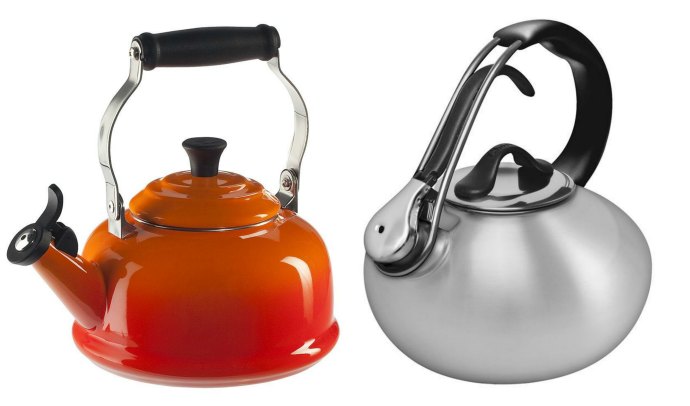Serving Tea to Your Guests
Posted by Julie on Dec 14th 2016
While the weather may not yet be frightful, it's definitely chilly. Cold drinks filled with ice cubes don't sound nearly as cozy as a cup of hot tea. Fortunately, serving tea is easy since there are so many delicious varieties to suit everyone's tastes. Read on to learn more about different types of tea and how to brew it, either for yourself or for a crowd.
Serving Tea: Types of Tea
Tea is far more complex and storied than we can adequately cover here. We'll stick with a few of the types of tea that you're most likely to drink at home and serve to your guests.

Black Tea
Black tea is the most common type of tea in the US and Europe. Black tea leaves undergo a higher level of oxidation than other teas. Darjeeling and Earl Grey are both examples of black teas.
Green Tea
Green tea is the most common type of tea in Asia. Green tea leaves are not oxidized. They are heated to halt oxidation, then rolled or shaped and dried. Sencha and Matcha are both examples of green teas.
White Tea
White tea has no caffeine and a delicate, subtle flavor. Like green tea, white tea leaves are not oxidized. They are only withered and dried, and may be heated to halt oxidation either before or after withering.
Oolong Tea
Oolong tea is partially oxidized, which means the color and flavor can vary along the spectrum between green tea and black tea. Oolong processing is the most involved of all the types of tea.
Herbal Tea (Tisanes)
Herbal tea is not actually tea, since it doesn't come from the Camellia sinensis plant. Chamomile, ginseng and peppermint are all used in tisanes, which are caffeine-free.
Serving Tea: Loose Tea vs. Tea Bags or Sachets
Loose tea is generally accepted as higher quality and better tasting than mass-produced tea bags. If you examine a tea bag -- or cut it open and pour out the contents -- you can see the tea leaves inside are not actually leaves at all. They're tiny shards of leaves and dust known as fannings.
On the other hand, loose leaf tea -- as shown in the photos above -- has much more surface area, which results in more complex and fuller flavors as it steeps. Loose leaf tea also goes through more careful and involved processing.

One potential compromise between the two are whole leaf tea bags. Look for pyramid-shaped bags, which are able to accommodate full leaves and don't flatten out, allowing room for water to flow between the leaves as they steep. Teatulia, The Republic of Tea, and Tea Forté all sell whole leaf tea bags.
Serving Tea: Ways to Brew
Now that you know what to look for in a tea, let's talk about ways to brew it. A traditional tea kettle is helpful for boiling water. Yes, you can boil water in a pot or in the microwave, but a kettle is handy for pouring. Plus, most kettles whistle when the water has reached a boil, so you don't have to hover. And a kettle looks homey on the stovetop, whether it's in use or not.

For traditional decor, check out Le Creuset tea kettles, and for more modern sensibilities, we like the selection from Chantal. You can also use an electric kettle to heat water for tea. The advantage of an electric kettle is that many models can heat water to specific temperatures, which is key for properly steeping white, green and oolong teas.
 Free shipping over $49
Free shipping over $49










